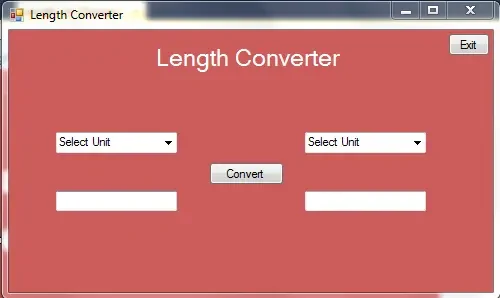
The Ultimate Guide to Using a Length Converter Tool
In today’s interconnected world, where global interactions are a part of daily life, understanding and converting between different units of length is more than just a mathematical exercise; it's a practical necessity. Whether you're a student tackling physics problems, a traveler planning an international trip, or a professional dealing with multinational projects, a length converter tool is an indispensable asset. This guide will walk you through the ins and outs of using a length converter tool effectively. Check out BeBran's Free Length Converter Tool.
Understanding Length Units

Before diving into the mechanics of length conversion, it's important to understand the various units of length. The most commonly used systems are the metric system and the imperial system. The metric system, used widely around the world, includes units such as meters (m), centimeters (cm), and kilometers (km). The imperial system, predominantly used in the United States, includes units like inches (in), feet (ft), and miles (mi). There are other units too, such as nautical miles used in maritime and air navigation.
Choosing the Right Length Converter Tool
There are numerous length converter tools available online, ranging from simple, user-friendly interfaces to more complex ones with additional features. The key is to select a tool that suits your needs. If you need quick, basic conversions, a simple and straightforward converter would suffice. For more complex tasks, like converting between scales or integrating with other software, look for a tool with advanced capabilities.
How to Use a Length Converter Tool

Using a length converter is typically straightforward:
- Input the Value: Start by entering the numerical value you wish to convert. Ensure accuracy in the number to avoid errors in conversion.
- Select the Units: Choose the unit of measurement from which you are converting and the unit you wish to convert to. For instance, if you want to convert 5 feet to meters, you'll select 'feet' as the unit to convert from and 'meters' as the unit to convert to.
- Perform the Conversion: Once you input the value and select the units, hit the convert button. The tool will display the converted value in the desired unit.
- Cross-verify: It's always a good practice to cross-verify the result, especially if the conversion is for a critical task.
Free Tools: Free Domain Age Checker Tool Online | Free Bulk Email Validator Tool Online | Free Online Ping Website Tool Online
Understanding Conversion Factors
Each length conversion relies on a specific conversion factor. Understanding these can be useful, especially if you need to perform a conversion manually. For example, 1 inch equals 2.54 centimeters, and 1 kilometer equals 0.621371 miles. Knowing these basic conversion factors can help you understand and even estimate conversions before using the tool.
Tips for Accurate Conversion
- Double-Check Inputs: A common error in using conversion tools is inputting incorrect values. Always double-check the numbers you enter.
- Understand Rounding: Some conversions result in long decimal numbers. Depending on your requirement, understand how the tool rounds off the numbers and adjust your inputs accordingly.
- Use Updated Tools: Conversion factors, especially for scientific units, can be updated. Use a tool that stays current with the latest standards.
Advanced Features
Advanced length converter tools might offer additional features like:
- Unit Conversion History: Some tools save your recent conversions, which can be handy for repeated tasks.
- Bulk Conversion: Converting a list of measurements all at once is a feature available in some advanced tools.
- Integration with Other Tools: Some converters can integrate with drafting software, spreadsheets, or other technical tools, streamlining the workflow.
Applications in Real-Life Scenarios
Length converters find utility in various real-life scenarios:
- Travel and Tourism: Converting distances and heights while planning trips or navigating in a foreign country.
- Education: Assisting students and educators in science, geography, and math-related subjects.
- Construction and Engineering: Essential for professionals working with international teams or projects.
- E-commerce: For businesses, especially in fashion and shipping, to cater to a global customer base.
Conclusion
A length converter tool is a simple yet powerful instrument in your arsenal, especially in an era where cross-border interactions are commonplace. By understanding the basics of length units, choosing the right tool, and applying it accurately, you can navigate through various personal and professional tasks with ease and precision. Check out BeBran's Free Length Converter Tool. As technology advances, expect these tools to become more sophisticated, integrating seamlessly into various aspects of work and life. Remember, in a world measured in countless units, a good length converter is your key to unlocking global compatibility.
Explore More: How to Use an HTML Online Viewer to Debug Your Code | Speed Up Your Website with HTML Minification: Best Practices
Frequently Asked Questions
1. What is a length converter tool?
A length converter tool is an online or software application that allows you to convert between different units of length, such as meters, feet, inches, and miles.
2. How accurate are length converter tools?
Most length converter tools are highly accurate, offering precise conversions based on standard unit measurements.
3. Can I convert between metric and imperial units?
Yes, length converter tools typically allow for conversions between metric (meters, kilometers, etc.) and imperial units (inches, feet, miles, etc.).
4. Do length converter tools require any special software to use?
No, most length converter tools are web-based and can be used directly in a web browser without any additional software.
5. Are there length converter apps for smartphones?
Yes, there are many length converter apps available for both Android and iOS devices.
6. Is it possible to convert lengths to non-standard units?
Some advanced converter tools might offer conversions to non-standard units, but this feature varies among tools.
7. Can I use a length converter tool for professional purposes?
Yes, these tools are suitable for professional use, but it’s important to verify the conversion accuracy for critical applications.
8. Are length converter tools free to use?
Most online length converter tools are free, although some apps might offer additional features through in-app purchases.
9. How do I choose the best length converter tool?
Look for a tool that offers a wide range of units, high accuracy, and user-friendly interface. Reading reviews can also be helpful.
10. Can length converter tools handle large numbers and decimal places?
Yes, most length converter tools can handle large numbers and multiple decimal places, allowing for precise conversions.



